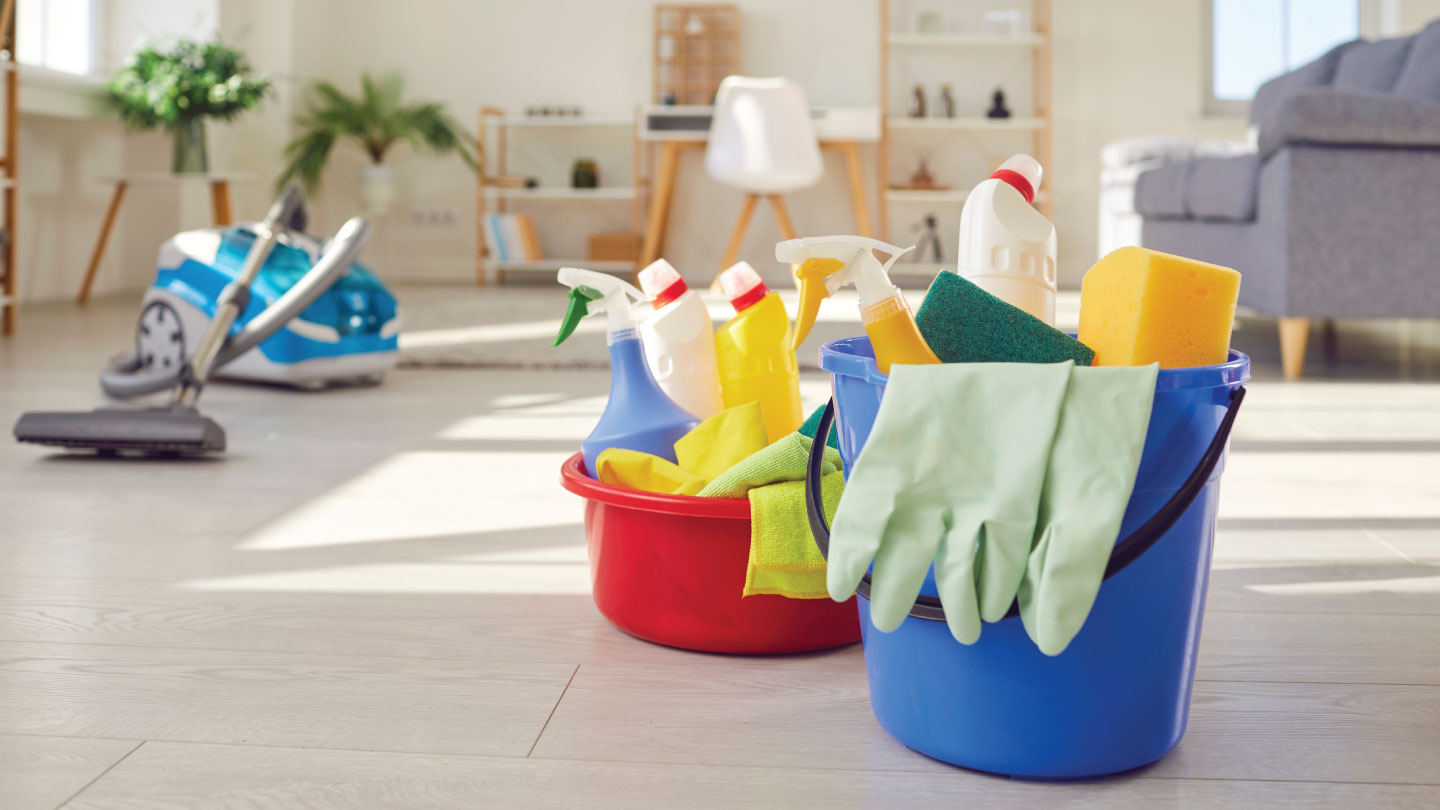Parenting
7 Ways to Manage Separation Anxiety in Preschoolers
The stress of separation anxiety is a shared experience between parent and child. Learn how to support your child through this developmental phase with these 7 helpful tips.

Leaving your child at preschool can be an emotional milestone for both you and your little one. Separation anxiety is a common and completely normal part of the transition process, as your child learns to navigate being away from you. Seeing them struggle with the transition can tug at your heartstrings, but it's all part of their development into an independent, confident individual. With a sprinkle of patience, a dash of empathy, and a cupful of love, you'll both navigate through these bumpy emotions together.
Surviving separation anxiety takes a mix of preparation, quick transitions, and the passage of time. While we’re often reassured that the tears stop shortly after we leave, how many of us still feel like we’re “doing it all wrong” when our child clings to us, sobbing and begging us to stay? It’s a completely normal phase, a beautiful sign of a deep emotional bond.
Need all your wellness solutions in one place? A whole new world awaits just a click away.
What is Separation Anxiety?
Separation anxiety is often easy to spot, especially during those tear-filled drop-offs. If you're seeing your child cling to you or cry when it's time to part, you're likely witnessing the signs. Other common indicators include:
- Becoming more clingy when you leave
- Crying or clinging in unfamiliar situations, particularly between 6 months and 3 years
- Refusing to sleep without you or another caregiver nearby
- Suddenly crying at night after previously being able to sleep through the night
These behaviors are all signs of separation anxiety, a completely normal phase in your child’s emotional development.
Related story: This Mindset Can Reduce Stress And Help Raise Smarter Kids
7 Proven Strategies to Deal With Separation Anxiety in Preschoolers
Keep Goodbyes Short and Sweet
Creating a specific goodbye ritual before the first day of preschool can help ease some of the anxiety around that final parting. It’s important to make the moment special and consistent, so your child knows what to expect. Try one (or more) of these ideas:
- Develop a unique handshake or wave that becomes your special goodbye.
- Hug, kiss, high five, and say goodbye with love and confidence.
- Tuck a small transitional object—like a wishing stone, a photo, or a special charm—into your child’s backpack as a comforting reminder that you’re always with them.
- Leave a sticker or drawing of a heart as a love note in their lunchbox to remind them that you love them and will be back to pick them up soon.
These small rituals can help ease the transition and give your child something familiar to hold onto, making the separation a little less scary and a lot more manageable.
Related story: How To Raise Your Kids in Digital Age
Explain the Routines of Preschool
For many children, the anxiety of starting preschool stems from the simple fact that they have no idea what to expect. As Katrina Green, a certified early childhood and special education teacher from USA, explains, "They’ve spent the first few years of their lives learning the routines of their family, and the new rules and rhythms of school can feel completely unfamiliar."
To ease this transition, it's helpful to talk about what they’ll experience—share the fun games they’ll get to play, the new friends they’ll meet, and reassure them that you’ll always be there to pick them up at the end of the day. However, it’s important to keep things realistic: Don’t overhype school or make promises about things you can’t control, like making new friends right away. If their first experience doesn’t match their expectations, school might feel more overwhelming than exciting. Balancing excitement with honesty helps set them up for a smoother transition.
Related story: Fun Ideas To Keep Your Kids Active And Limit Screen Time
Start With a Warm Up
Start by easing into the new experience with a warm-up. Take your child to visit the school a couple of times before the first day. Many preschools offer special visiting days, which are perfect for this. With you by their side, your child can feel more comfortable exploring the classroom, checking out the toys, and getting familiar with the space. It’s also a great opportunity to ask the teacher about the first-day routine and learn about the typical schedule. This way, both you and your child can feel more prepared and confident for the big day.
During these visits, let your child take the lead, whether it’s playing with the blocks or simply looking around, as this helps them feel more in control of the new environment. Familiarity with the space can reduce anxiety and make the transition smoother. You can also talk through any potential concerns with the teacher, ensuring everyone is on the same page for a seamless start.
Related story: Teaching Kids How To label Their Feelings
Don’t Make False Promise
One of the most important ways to build trust with your child during this transition is by always following through on your promises. If you tell them you'll be back to pick them up after school, make sure you’re there when you say you will be. Consistency will help them feel secure and reinforce the idea that even though you're apart, you will always return. Also, part of what makes children anxious when you part is the fear that they might not see you again. Discussing plans for your return helps to ease this fear: “After I’m finished work, I’ll come and pick you up and we can go to the playground and play on the swings together.”
For example:
- If you promise to be there to pick them up after school, make sure you're on time to avoid any feelings of abandonment.
- If you say you'll come back for a special treat or activity after school, make sure it happens, so they can see that your words are reliable.
- If you commit to giving them a quick call or text to check in after a separation, follow through on that as well, reassuring them that you're always thinking of them.
Related story: 8 Ways to Build Resilience in Kids
Practice Being Apart
Practice being apart. Before preschool starts, give your child a chance to experience short separations to help ease the transition. Try leaving them with a trusted friend or relative while you run a quick errand. This allows your little one to slowly get used to the idea of being apart, while still feeling safe and supported. You can also send them to grandma’s house for a visit, schedule playdates, or ask friends and family to care for them for an hour on the weekend. These small steps help your child practice being independent and build confidence in your absence. Before starting daycare or preschool, try practicing your goodbye ritual too, so they’ll know what to expect and feel more prepared when the time comes to part ways for real. This gradual approach helps them adapt, giving them the tools to thrive when it’s time to head to school.
Related story: 5 Ways To Instill Body Awareness in Kids
Don’t Sweat on the Setbacks
It's completely normal for your child to seem fine one week with separation, only to have a meltdown the next. You may also notice them regressing at home—maybe they start refusing to put on their own clothes or have accidents after being potty trained. These types of regressions can happen, especially when children are going through big changes like starting preschool. It’s important to remember that this is a part of the process and usually resolves over time as they adjust to their new routine.
However, if you notice frequent or persistent regressive behavior, it’s a good idea to talk with their teacher or pediatrician. They can help provide guidance and ensure there’s nothing deeper at play. Patience and consistency will be key during this time of transition.
Don't Sneak Away
While it may seem tempting to slip away quietly, this approach can actually make some children feel more afraid and confused. Fran Walfish, Psy.D., a child and family psychotherapist, advises against abruptly leaving without saying goodbye. It can take up to ten weeks for a child to fully adjust to being left at school without their parents. The best way to handle the separation is for the parent to stay nearby at first—sitting next to the child, offering a reassuring presence without actively engaging in play. This provides a safety net while they slowly become accustomed to the new environment.
If you choose this approach, it's important to clearly communicate when you’re going to leave. Let your child know ahead of time, and be sure to follow through. You might use a visual timer so they can see how much time they have left before you leave. A transitional object, like a picture, bracelet, or small token, can also help them feel connected to you during the day. Be sure to give clear warnings before it’s time to say goodbye, and when the moment comes, stick to the plan and leave as promised. This predictability helps build trust and security during the transition.
Need all your wellness solutions in one place? A whole new world awaits just a click away.
EXPLORE MORE
Here’s how gentle screen time supports early development of kids and what shows you should pick to nurture young minds.
From partners to parents to friendships, phubbing is disrupting relationships everywhere. Learn more about it and how to reorient yourself.
From acidity to poor sleep, here are safe fixes that fit easily into everyday routines.
Smart cleaning tips to keep in mind so those with asthma or allergies can breathe easier.










